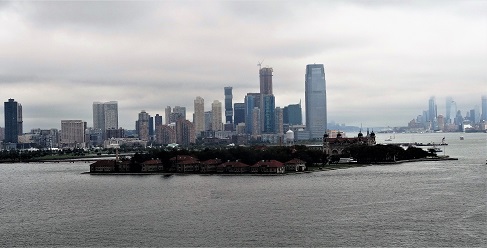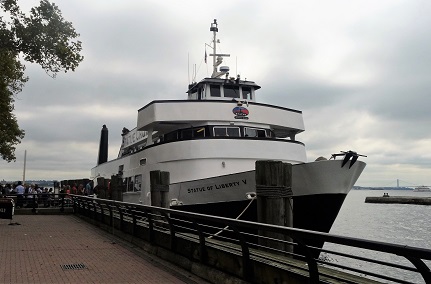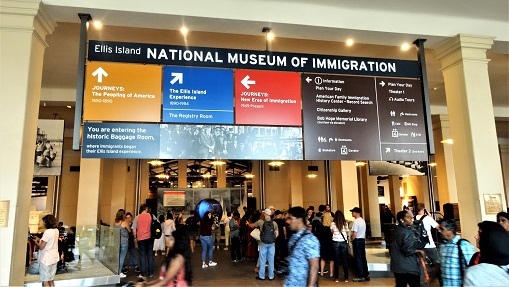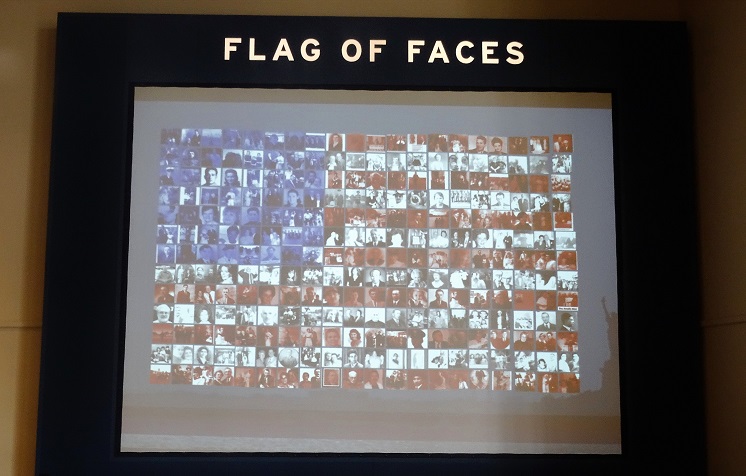


|
|
|
|||||||||||||||
|
|
||||||||||||||||
|
|
|||
|
|
New York Ellis Island Immigration Centre
Ellis Island is situated just past the Statue of Liberty as one enters the mouth of the New York Harbour and provides a view of New York in the background.  The island contains the National Museum of Immigration, which is located in the Main Building of the former immigration station complex. Ellis Island functioned as an immigrant inspection station from 1892 until 1954. The first Immigrant Station was built of wood and opened on January 1, 1892. This was completely destroyed by fire on June 15, 1897. The present structure built of red bricks and is trimmed with white limestone in the Renaissance style and opened on December 17, 1900, although the facilities was only just able to handle the number of immigrants that arrived in the years before World War I. This influx of immigrants resulted in the requirement for further development, which included the construction of a Hospital, on the south side of the island, although this part of the island is not open to the public. When ships arrived in New York they would dock at Ellis Island and the immigrants would disembark as the ferry does today.  Once there they would be processed. Some 12 million immigrants entered the United States through Ellis Island and their descendants account for almost half of the country’s population. During its peak, Immigration officials reviewed about 5,000 immigrants a day. Originally the island was the site of Fort Gibson and later a naval magazine. Fort Gibson was one of the earliest forts built after the American Revolution. Its remains were discovered during the excavations for the American Immigration Wall of Honour. There were in fact two forts, the first was built of wood in 1794, the second was constructed between 1807 and 1811. The fort was manned by Union forces during the Civil War. The island has been owned and administered by the federal government since 1808. Between 1892 and 1934 Ellis Island was expanded by land reclamation. It has been operated by the National Park Service since 1965 when it was made part of the Statue of Liberty National Monument. The building has undergone restoration and today visitors see it as it appeared when it was in use from 1918 to 1924. The main building was converted to a museum of immigration in 1990 and tells the story of the immigrants and the process that they went through in order to be assessed prior to being allowed into the United States.  The museum's entrance is the former Baggage Room, it was here that immigrants would check-in their luggage prior to going through the immigration process, although many would choose to retain their luggage with them for fear of losing it. This would be reclaimed once they had been granted entrance to the country. Today the hall contains a number of displays showing the role of the immigration centre during its history and includes artefacts, photographs, prints, videos, interactive displays, oral histories, and temporary exhibits. A notable display is the World Migration Globe, which illustrates the migration patterns of people around the world throughout history.  Also displayed in the entrance is the American Flag of Faces, this is a large, interactive video installation filled with a montage of images submitted by people of their families, or ancestors. Also displayed in the entrance is the American Flag of Faces, this is a large, interactive video installation filled with a montage of images submitted by people of their families, or ancestors. From the Baggage Room, the prospective immigrants would then enter the Registration Hall where they would wait in line in order to be assessed to determine if they could be allowed into the country. This room shows how it would have looked during the period 1918-1924. Leading from the Registration Hall are a number of Galleries. The pre-Ellis galleries cover the earliest arrivals, including Native Americans, those who arrived as slaves, and immigration during the Colonial and Victorian eras. It covers the period until the opening of Ellis Island as an immigration centre in 1892. The wing ‘Through America’s Gate’ describes the steps which new arrivals went through in order to screen out any undesirable, this included the incurably ill, the disabled, impoverished and criminals. The system generally took approximately five hours, which included a medical and a legal examination before they were allowed entry. For some people, additional tests would be required which could include a legal hearing, something that was required for approximately 10%. Approximately 2% of those going through the system would be denied admittance and would be returned to their homeland. A number of rooms can be seen which were used as offices, dormitories, medical rooms and the legal hearing rooms, where appeals would be heard and detention quarters where they would be held prior to their return to their homeland. On the lower floor, where today’s café is located, was the immigrants dining area. Outside the Reception building, overlooking the Lower Manhattan skyline is the American Immigrant Wall of Honour, this is a permanent exhibit of individual or family names and is the only place in the United States where an individual can honour their family heritage at a National Monument.  It contains the names of over 700,000 people who entered the United States through Ellis Island. A visit to Ellis Island is normally tied in with a visit to the Statue of Liberty as both can be included on the same ticket. Visit Official Website |
|
|
|
|
|||
All Photographs were taken by and are copyright of Ron Gatepain
| Site Map |